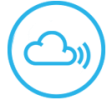Diane - US: HIV, Fibromyalgia, CFS/ME (LDN, low dose naltrexone) from LDN Research Trust on Vimeo.
Linda Elsegood: Diane from the United States. You take LDN for fibromyalgia, chronic fatigue syndrome, and Diane has been HIV positive for 26 years. Thank you for joining me, Diane.
Diane: You're welcome. My pleasure.
Linda Elsegood: Could you tell me when you first started to become unwell with your fibre morale during your chronic fatigue?
Diane: Approximately 2008.
Linda Elsegood: And what were you noticing at that time?
Diane: Um, I was having several issues. Um, primarily though I, uh. Had passed out, they diagnosed as single P. Here in the United States. It's an unexplained reason for blacking out. Um, and everything seemed to just go downhill from the day that I blacked out, fell and hit my head.
Um, and, um, was, I was put on, uh. Short term disability, so we could figure out what was happening to me in, in the course of, um, seeing doctors. Uh, I was diagnosed with fibromyalgia. Um, and along with that, uh, unfortunately, a seizure disorder due to the fall and hitting my head. Um, so that started my medical journey, uh, until I had several issues.
That don't necessarily, the seizure disorder doesn't necessarily relate to the ledges now check them, but the fibromyalgia is chronic fatigue. Certainly did. When I was diagnosed with the fibromyalgia, um, my doctor is very much a proponent of low dose naltrexone, and he mentioned it to me, but I did not take it.
Take the advice because it was very concerned about everything that was happening to me. So he mentioned it to me a few times and let me be comfortable with my decision. And then I finally, after a few years, once I got everything else straightened out, um, it was concentrating solely on the fibromyalgia in the chronic fatigue to perhaps give it a try.
And um. Yes. So, um, the winter of , uh, 12 December 2012
Linda Elsegood: and when you first started, did you notice any introductory side effects.
Diane: Well, uh, I have to say, I immediately felt a lot more energy and felt better, uh, within a couple of days. Mmm. Side effects. After a week reselling or first week, I noticed vivid dreaming and insomnia. So. Uh, I spoke to my doctor about it, and he suggested that I, um, just the dust, adjust the dose on my own, kind of play around with it and see what would work for me.
But unfortunately, at the same time, um, I got very sick with a virus that was going around members of my family. Got it. And um. I just became concerned about my immune system being getting so sick with this virus that I stopped the low dose naltrexone. Right. Um, well, when I, when you get very sick like that, and I didn't bounce back from it where my family members did, I was shipped for about six weeks.
With the HIV, even though I have a very healthy immune system, uh, and I didn't fully understand what the LDN was doing for me. I stopped it because I just wanted to get better again. Um, if you asked me today, would I stop it? I would say no, but I didn't know enough back then. Um, what the LDN was, was actually doing for me.
But then it happened again two more times. And it was coincidentally, we stopped the LDN and was off it for several months. I started again, and I got sick again. And I even, um, we sold to the Yahoo group and posted on there, if you have anybody ever, you know, uh. With this society act where you would get this upper respiratory lung, lung infection.
And everybody said, no, that's not normal. You know, nobody had experienced that. So I was concerned that something might be going on with me. So it just seemed that every time I took it, I got sick, and then when I went off it, I got better. It was purely coincidental. It was just a bad year. There was a lot of, uh, the weather was crazy, and there were a lot of germs going around, and so I just got sick a lot, which is not normal for me that year.
So moving forward, um, in the last, last six months, started with the LVN again, and I've been on it on a consistent basis, and it's been working very well for me. Fantastic. So what would you
Linda Elsegood: say now your quality of life is like?
Diane: Um, I would say that taking the LDN has given me back a good portion of my life. Um, prior to the LDN, the fatigue and the, uh, body. Aches and pains were so debilitating that I didn't do a whole lot. Now with the LCN, um, I feel wonderful. Um, and even though I might feel a little achy, uh, I still, it allows me to go out and exercise.
Um, I led to walk—a mile or two. I take yoga classes a couple of times a week, none of which I did before the load check stuff. Um, and socially I'm more open to going out and doing things, being able to, um, Nick commitments, which was something that I couldn't do prior to the LDN. Um. Fibromyalgia also comes with something called fibro fog, where you have cognitive dysfunctions and the inability to concentrate, or for me specifically, organized for an organized task to get things done with the LPN, fibro fog lifted.
And I was able to see my way through the day until you, okay, this morning I need to do this and this, and then this afternoon and that, uh, and to sit in the exercise, which is so critically important to me, the LTN allowing you to exercise that alone changed my life completely. And then it just gets better from there.
Well, it's amazing. Thank you very much
Linda Elsegood: for sharing your experience with us.
Any questions or comments you may have, please email us at Contact@ldnresearchtrust.org. I look forward to hearing from you. Thank you for joining us today. We really appreciated your company. Until next time, stay safe and keep well.







